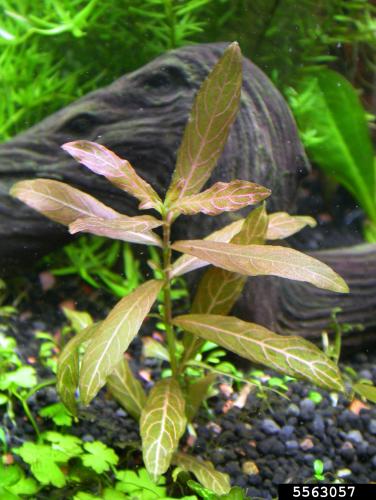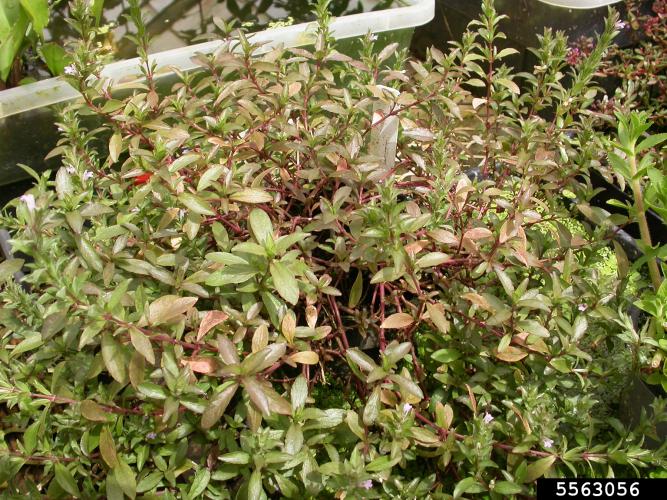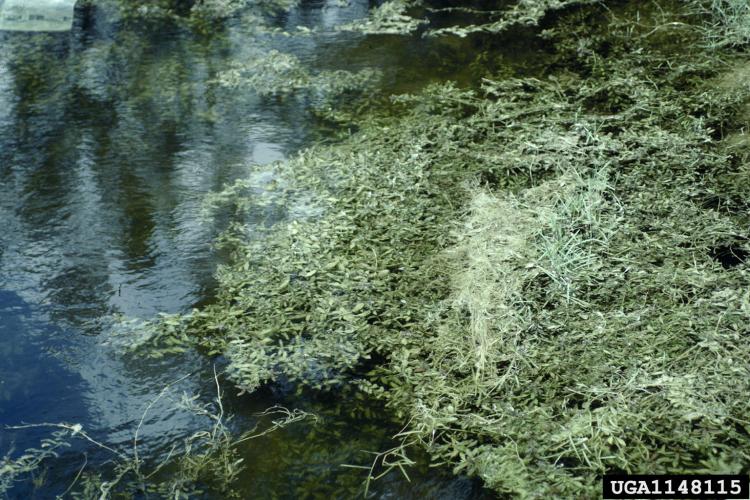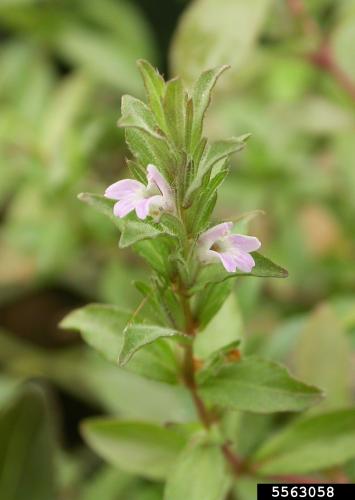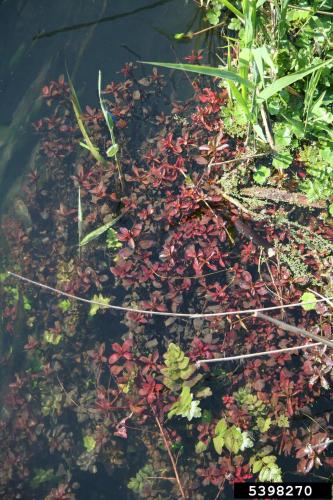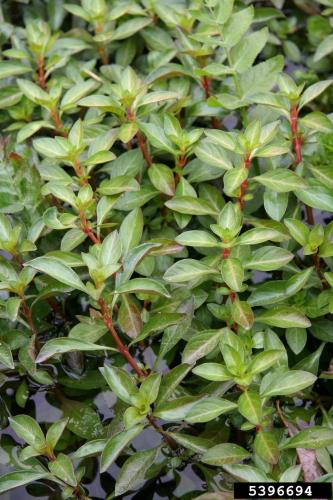East Indian hygrophila
Identification
Appearance
East Indian hygrophila is an herbaceous aquatic plant whose growth is reminiscent of a deciduous sapling. It primarily roots and grows fully submerged, but the stem is capable of emerging in shallow waters. East Indian hygrophila can grow up to 3m underwater. Its stem is close to square, and its leaves are arranged in an opposite formation.
Foliage
East Indian hygrophila leaves are oblong and pointed, growing 8cm long and 2cm wide. The leaves have entire margins and are pinnately veined. When submerged, leaves are light green in color, but when emerged they tend to have a redder hue.
Flowers
The flowers are small and bluish white. It is uneven and two-lipped, with the upper lip being two-lobed and the lower lip being three-lobed.
Biology
Habitat
East Indian hygrophila inhabits shallow water bodies and wetlands including ponds, streams, and marshes. It is found both in shallow water bodies (<3m depth) and on the banks of deeper water bodies, where it is not fully submerged. It exhibits the most growth in temperatures between 18-30C but can survive in near freezing conditions. It additionally can survive in low light conditions, and low CO2 levels, as it can pull CO2 from the atmosphere when not submerged.
Life Cycle
East Indian hygrophila reproduces asexually. Reproduction occurs through a process of fragmentation in August, after the growing season is completed. The shoot of the plant, up to the root crown, breaks off. In large populations, these shoots go to the surface and create floating mats. The plants flower between September and November. Slowly, portions of the shoot float downstream, and root upon making contact with soil. These shoots overwinter and begin Spring growth in March. They grow throughout the spring and summer, reaching the water’s surface and emerging, before again fragmenting in August.
Ecological Threat
East Indian hygrophila has low light requirements yet still displays rapid growth, so it is a strong competitor compared to native submerged vegetation. It can displace native vegetation, resulting in a monoculture, which reduces aquatic animal habitat and food availability. East Indian hygrophila also impacts agricultural systems and recreation. It has been known to colonize and clog irrigation pipes, as well as disturb boating and swimming activities.
Vermont Distribution
East Indian hygrophila has not been reported to be present in Vermont.
How You Can Help
Prevention is the most effective management strategy. Actions such as cleaning off boots and waders, and cleaning, draining, and drying watercraft before transferring between water bodies can help prevent its spread.
Citations
Photo Credit
5563056, 5563057, 5563058: Shaun Winterton, Aquarium and Pond Plants of the World, Edition 3, USDA APHIS PPQ, Bugwood.org
1148115: USDA APHIS PPQ - Oxford, North Carolina , USDA APHIS PPQ, Bugwood.org
5398270: Robert Vidéki, Doronicum Kft., Bugwood.org
Information Credit
Indian Swampweed (Hygrophila Polysperma). US Fish & Wildlife Service, Jan. 2015.
USGS. “Hygro (Hygrophila Polysperma) - Species Profile.” Usgs.gov, 20 Feb. 2024, nas.er.usgs.gov/queries/FactSheet.aspx?SpeciesID=225.
Tamu.edu, Texas A&M AgriLife Extension, aquaplant.tamu.edu/management-options/hygrophila/. Accessed 20 June 2025.
